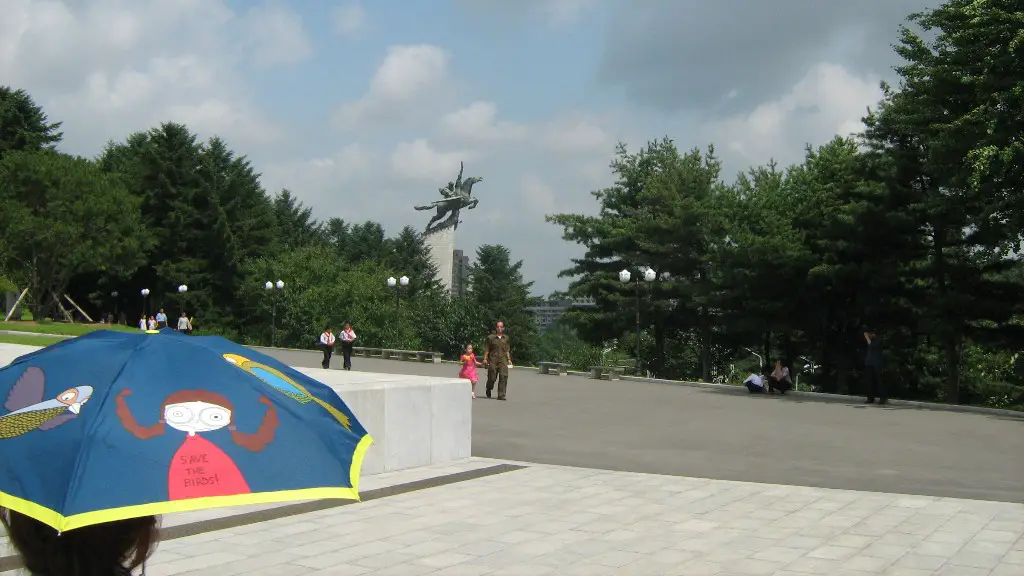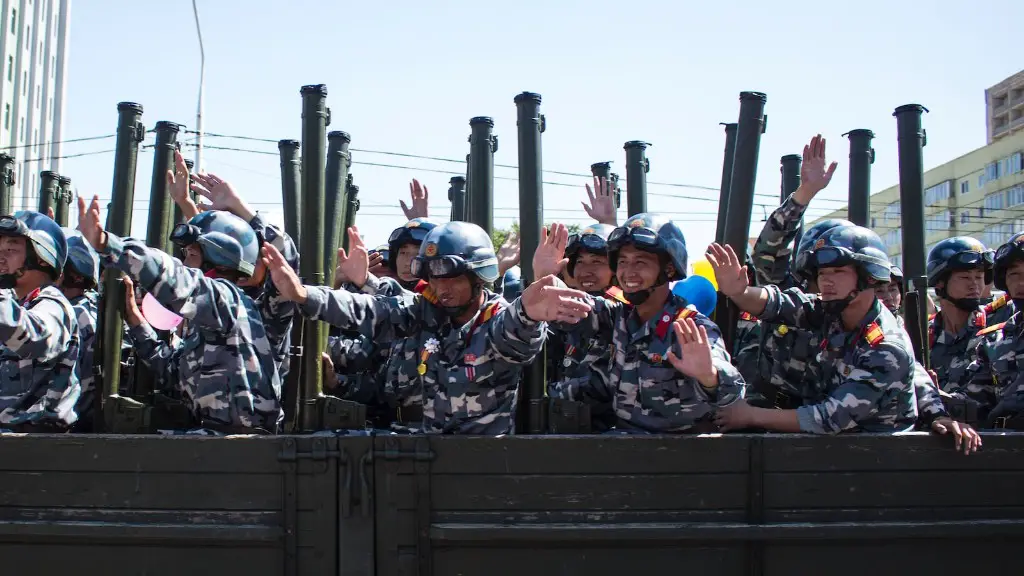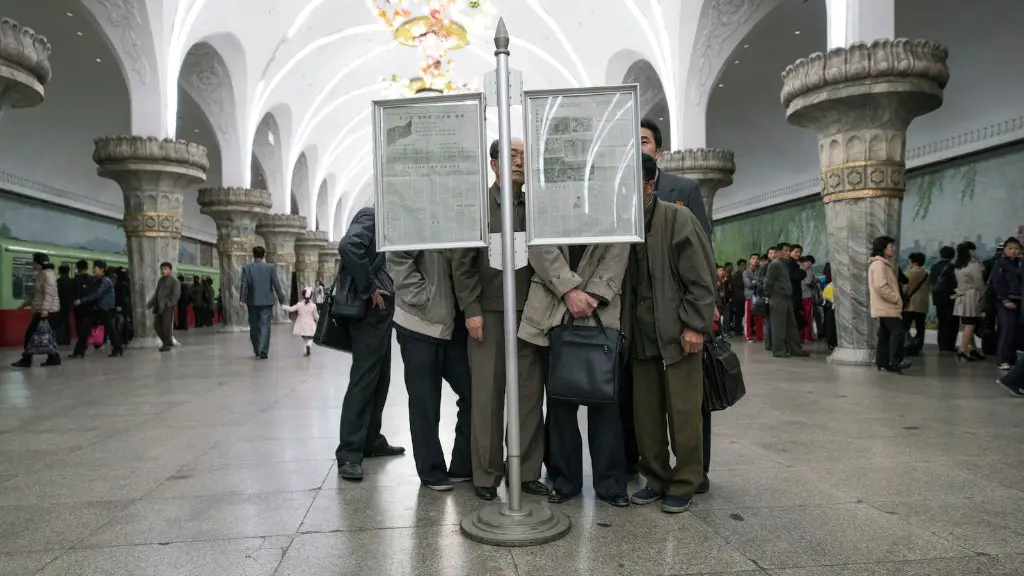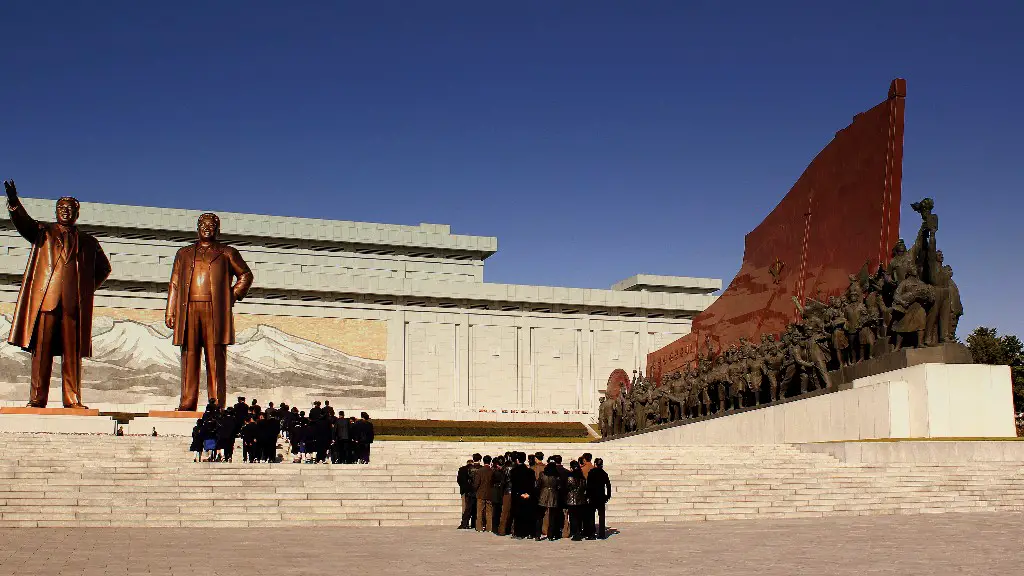The division between North and South Korea is a result of the post-World War II administration of the Korean peninsula by the Soviet Union and the United States. At the end of the war, the Soviet Union occupied the northern portion of the peninsula, while the United States occupied the southern portion. This division was meant to be temporary, but the two occupying powers were unable to agree on a plan for unification. As a result, the peninsula was divided into two separate countries: the Democratic People’s Republic of Korea (North Korea) and the Republic of Korea (South Korea).
The border between North and South Korea was originally drawn by the Soviet Union and the United States as part of the post-World War II settlement. The line was meant to be temporary, but became permanent after the Korean War. The division of Korea has led to a unique situation where two countries that are technically still at war are also some of the most heavily militarized borders in the world.
Why did North Korea and South Korea split?
It is reasonable to conclude that the division of Korea was done in order to stop the Soviet advance south of the 38th parallel. This was US policy during World War II in order to prevent any single power’s domination of Korea.
The Korean peninsula was split into two zones of occupation – the US-controlled South Korea and the Soviet-controlled North Korea – at the end of World War II in 1945. Amid the growing Cold War tensions between Moscow and Washington, in 1948, two separate governments were established in Pyongyang and Seoul.
The division of the peninsula was a result of the Allies’ inability to agree on a single administration following the defeat of Japan. The Soviet Union, which had occupied the North, was unwilling to give up control, while the United States, which had occupied the South, was equally unwilling to cede power.
The division of the peninsula led to years of conflict and tension between the two Koreas, which culminated in the Korean War (1950-53). Although a ceasefire was reached at the end of the war, the two Koreas remain technically at war, as a peace treaty was never signed.
How are North and South Korea separated
The Demilitarized Zone (DMZ) is a region on the Korean peninsula that demarcates North Korea from South Korea. It roughly follows latitude 38° N (the 38th parallel), the original demarcation line between North Korea and South Korea at the end of World War II. The DMZ is a 4-kilometer-wide (2.5-mile-wide) strip of land that runs the entire length of the peninsula, from the east coast to the west coast.
In North Korea, citizens can only travel abroad with permission from the government. This is similar to other Soviet, socialist, or Eastern Bloc countries. North Koreans must obtain a passport and visa from the government in order to travel.
Who started the Korean War?
The Korean War was a conflict between North Korea and South Korea that began on June 25, 1950. The war began when North Korean troops invaded South Korea in an attempt to reunite the two countries under communist rule. The United States, which had been providing military aid to South Korea, intervened on behalf of the South Koreans and helped to push the North Korean troops back north of the 38th parallel, the line that had originally divided the two countries. A ceasefire was reached in 1953, but the war never officially ended, and the two countries remain divided to this day.
The US supported the Republic of Korea (commonly called South Korea), in repelling an invasion from the Democratic People’s Republic of Korea (commonly called North Korea) The Korean War was a conflict that emerged after World War II The Empire of Japan had occupied the Korean Peninsula during the war.
Who decided to split Korea before WWII ended?
The Korean War was a conflict between North and South Korea, in which Japan lost all power over the Korean peninsula. After WWII, the United States and the Soviet Union divided Korea along the 38th parallel, resulting in the Korean War.
Japan invaded/colonized Korea because it was part of Japan’s imperialist goals. imperialist goals. At the time, Japan saw Korea as a way to gain a foothold in Asia and to help them economically. However, some historians argue that Japan also had other motivations, such as wanting to control Korea’s trade routes or to establish a buffer zone between China and Russia.
Can North and South Korea ever unite
The North-South Joint Communiqué was issued on July 4, 1972, following a meeting between the leaders of North and South Korea. The Communiqué stated that unification of the Korean peninsula would be achieved through independent Korean efforts, without external interference. Unification would be achieved through peaceful means, not through the use of force.
The Korean conflict is an ongoing conflict based on the division of Korea between North Korea (Democratic People’s Republic of Korea) and South Korea (Republic of Korea), both of which claim to be the sole legitimate government of all of Korea.
The conflict began on 25 June 1950, when North Korea invaded South Korea in an attempt to reunify the country under its communist rule. The United Nations, with the United States as the principal force, came to the aid of South Korea, and the Soviet Union, China, and North Korea were expelled from the UN. An armistice was signed on 27 July 1953, splitting the peninsula along the demilitarized zone at approximately the 38th parallel.
There have been sporadic clashes between North and South Korea since the armistice, the most recent being the 2010 Yeonpyeong Island shelling. In addition, North Korea has been pursuing a nuclear weapons program, and has conducted several nuclear tests, most recently in 2013.
The ongoing conflict has resulted in more than 1.2 million people being killed, with no end in sight.
Was Korea ever a part of China?
The Ministry of Foreign Affairs of the Republic of Korea issued a statement on March 2, 2021, in response to the Chinese Ministry of Foreign Affairs’ remarks on the previous day regarding the Republic of Korea-China relations.
In the statement, the Korean ministry stressed that the ROK-China relations have been developing friendly and cooperative relations based on the principles of mutual respect and benefit, and highlighted that the international community has already recognized that the Korean Peninsula was not a part of China during the long history of interactions between the two countries.
The Korean ministry also pointed out that the Chinese Ministry of Foreign Affairs’ remarks on the Republic of Korea-China relations are not helpful for the development of the bilateral relations, and hoped that the Chinese side would make efforts to create an environment conducive to the development of the ROK-China relations.
US nationals should not travel to North Korea due to the serious risk of arrest and long-term detention. US citizens have been subject to arbitrary detention by North Korean authorities. The US government has been unable to help secure the release of detainees.
Can you leave North Korea if you were born there
The North Korean government strictly controls the movement of its citizens both within the country and abroad. North Koreans are not able to freely travel around the country or to travel abroad. Emigration and immigration are tightly controlled by the government.
Yeonmi Park’s story is one of hope and courage. Park and her family fled North Korea in 2007 in search of a better life. They settled in South Korea in 2009, before moving to the United States in 2014. Park has become an outspoken critic of the North Korean regime and an advocate for human rights. Her story is an inspiration to us all.
Who technically won the Korean War?
The Korean War did not technically end, since a peace treaty was never signed. Instead, an armistice agreement was signed in 1953, which essentially paused the fighting. However, this armistice was never signed by South Korea, and in 2013 North Korea unilaterally declared that it was no longer bound by the agreement. So technically, the Korean War is still ongoing.
In April 1950, Stalin gave Kim permission to invade the South under the condition that Mao would agree to send reinforcements if needed. Stalin made it clear that Soviet forces would not openly engage in combat, to avoid a direct war with the US. Kim met with Mao in May 1950 to discuss the plan. Mao agreed to send reinforcements if needed, but cautioned Kim that the US would likely intervene if the war escalated.
Did America win the Korean War
The Korean War was a devastating conflict that lasted for three years. Although it ultimately ended in a stalemate, the war resulted in the death of millions of people and the displacement of even more. The conflict also had a significant impact on the countries involved, particularly North and South Korea.
The United States and South Korea are allies under the 1953 Mutual Defense Treaty. Under the agreement, US military personnel have maintained a continuous presence on the Korean peninsula. The treaty was signed in the aftermath of the Korean War, and has been a key component of the US-South Korea alliance ever since. The treaty has been invoked several times over the years, most notably during the first Gulf War, when South Korean troops fought alongside US forces in the conflict.
Warp Up
The Korean Peninsula was divided following the end of the Second World War in 1945. The peninsula had been a Japanese colony since 1910, and following the Second World War, it was divided into two occupation zones, with the Soviet Union occupying the north and the United States occupying the south. A UN-supervised election in 1948 led to the establishment of the Republic of Korea in the south, and the Democratic People’s Republic of Korea in the north. The two states have remained divided ever since, despite periodic attempts at reunification.
The division of North and South Korea occurred at the end of World War II in 1945. The Soviet Union occupied the north of the peninsula, while the United States occupied the south. The two occupation zones were separated by the 38th parallel. This division became permanent when the two countries were founded in 1948. tensions between the two occupation zones increased, culminating in the outbreak of the Korean War in 1950.





